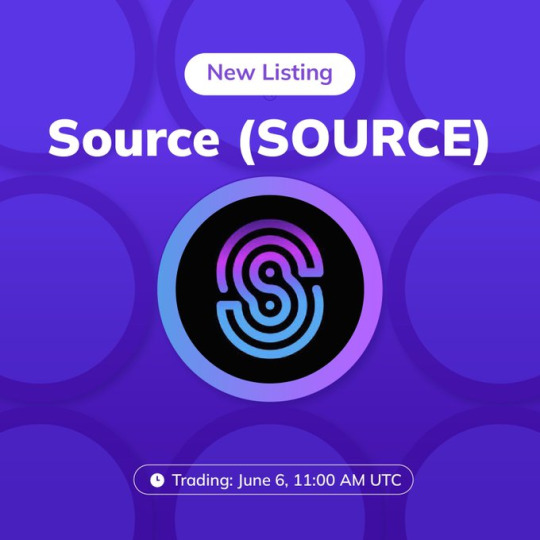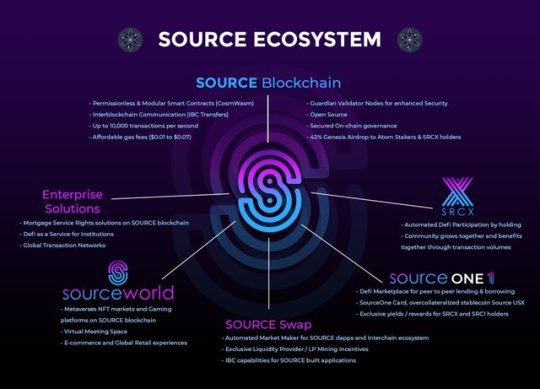#Web 3.0 development services
Explore tagged Tumblr posts
Text
Navigating the Future: Unveiling the Power of Web 3.0 Development Services
In the ever-evolving landscape of technology, Web 3.0 stands as a beacon of innovation, promising a new era of interconnectedness and user-centric experiences. As businesses and individuals alike adapt to the digital age, the demand for Web 3.0 development services has surged, unlocking a plethora of opportunities and reshaping the way we interact with the virtual realm.
Web 3.0, often dubbed the "Semantic Web," represents a paradigm shift from its predecessors. Unlike the static and information-centric Web 1.0 and the interactive but centralized Web 2.0, Web 3.0 is characterized by its decentralized nature, enhanced interoperability, and the integration of cutting-edge technologies like blockchain and artificial intelligence.
One of the key pillars of Web 3.0 development services is decentralized applications, or DApps. These applications leverage blockchain technology to operate without a central authority, providing users with unprecedented levels of transparency, security, and control over their data. As privacy concerns continue to dominate the digital landscape, the decentralized nature of Web 3.0 emerges as a game-changer, empowering users to reclaim ownership of their information.
Smart contracts, another cornerstone of Web 3.0, automate and enforce the execution of contractual agreements through blockchain. This not only streamlines processes but also reduces the risk of fraud, ensuring a trustless and tamper-proof environment for transactions. Web 3.0 development services enable businesses to harness the power of smart contracts, paving the way for more efficient and secure transactions.
Interoperability is a driving force behind Web 3.0's rise to prominence. Traditional silos are replaced with seamless connectivity, allowing different platforms and applications to communicate effortlessly. This interoperability enhances user experiences by breaking down barriers and fostering a more cohesive digital ecosystem. Web 3.0 development services play a crucial role in building and optimizing these interconnected systems, opening new avenues for collaboration and innovation.
Machine learning and artificial intelligence are integrated into the fabric of Web 3.0, providing personalized and intelligent user experiences. As users navigate the digital landscape, algorithms learn and adapt, tailoring content and interactions to individual preferences. This not only enhances user satisfaction but also lays the foundation for a more intuitive and responsive online environment.
In conclusion, the emergence of Web 3.0 marks a pivotal moment in the evolution of the internet. Web 3.0 development services are at the forefront of this revolution, offering businesses and individuals the tools to embrace decentralization, foster interoperability, and harness the capabilities of emerging technologies. As we navigate the future, the power of Web 3.0 development services becomes increasingly evident, reshaping the digital landscape and unlocking a new era of possibilities.
0 notes
Text
#digital marketing agency#digital marketing#web development#3.0 web#metaverse#ai development#seo services#blog post#website development#digital marketing trends
1 note
·
View note
Text
Benefits of Custom CMS Development For Your Business
#cms development#cms: wordpress#ecommerce#business#businessservices#web 3.0#web development#computer#tech#tvs#computing#web development company#web#website development#wordpress development#web developers#web design services#website development company#website design company#usa
0 notes
Text

AI & Machine Learning Company in Singapore
#Singapore AI solutions Singapore#Blockchain development Southeast Asia#Mobile#app development Singapore#Web development services Singapore#Cloud#computing solutions Southeast Asia#IoT integration Global South#Web 3.0 development Singapore#Metaverse solutions Singapore#Gaming development Southeast Asia#Digital transformation Singapore
0 notes
Text
Discover the simple and rapid method to develop your Web3 Application, with AI by your side. #zbyte #dPlat [http://zbyte.io]

#blockchain#web3#web 3.0#web3community#web3development#blockchain technology#digitalcurrency#bitcoin#dapp development services#dapp development company
1 note
·
View note
Text
A Buyer's Guide for choosing best Crypto Telegram Marketing Services

Telegram has revolutionized the way crypto projects connect with their communities, making it a vital platform for marketing in 2024. With its high engagement rates and advanced features, Telegram offers unparalleled opportunities for growth. Learn how to navigate the landscape of Telegram marketing services and choose the best partner for your project’s success.
Telegram’s importance in crypto marketing is set to grow even further in 2024. The platform’s high engagement rates, large user base, and extensive features make it an ideal environment for promoting cryptocurrency projects. Telegram allows for the creation of large groups and channels, enabling projects to build and manage substantial communities. Its support for bots and automation tools enhances user experience by providing efficient customer support, notifications, and trading activities. The platform’s robust security features ensure that communications remain private and secure, fostering trust within the community.
When choosing a Telegram marketing service, it is essential to consider factors such as reputation, experience, and the range of services offered. A provider with a solid track record and expertise in the crypto market is crucial for effective marketing. Evaluating the tools and strategies used by the service provider is also important to maximize reach and engagement. Additionally, understanding pricing structures and expected ROI, along with the availability of comprehensive analytics and reporting tools, will help you make an informed decision.
Intelisync is a top choice for crypto Telegram marketing, offering tailored solutions that drive growth and engagement. With a focus on high-quality content, effective community management, and transparent reporting, Intelisync ensures that your project achieves significant success. Partner with Intelisync to enhance your crypto marketing strategy and achieve remarkable results in Learn more...
#5 Best Crypto Telegram Marketing Company#Best Crypto Marketing Agencies in 2024#Choose the Best Crypto Telegram Marketing Services in 2024#How can I grow my crypto Telegram community effectively?#How do I ensure the Telegram marketing service aligns with my project goals?#Intelisync crypto development#Intelisync crypto telegram marketing services#Intelisync Web 3.0 Marketing Services#Key Features of Telegram for Marketing#Understanding Crypto Telegram Marketing#What is Crypto Telegram Marketing?#Why is Telegram an essential platform for crypto marketing?#Why Telegram for Crypto Marketing?
0 notes
Text
Web 3.0 Development Services | NFT Development Company
Want to transform your business with high-end Web3.0 development services? CybTekk is the Web 3.0 development company to help you unlock the full potential advanced technologies. It is a leading web 3.0 development company offers, blockchain based web3 game, application, website and platform development services. We specialize in Web 3.0 development services tailored for both enterprises and startups aiming to harness the advantages of the advanced decentralized web.
#Web 3.0 Development Services | NFT Development Company#web development services providers#blockchain development services#blockchain development company usa#top blockchain development company#android app developer company#technology
0 notes
Text

Efficiency Redefined: Krypcore's Advanced Web3 Development Tools
Redefine the efficiency of your dApp development with Krypcore's advanced web3 tools. Our platform offers a suite of features that make the development process seamless and intuitive, ensuring that your decentralized applications stand out in the rapidly evolving digital landscape.
#web3 development company#Web3 Services#best web3 development platform#build web3 dapp#dapp crypto#dapps nft#dapper labs#defi dapps#dapp list#dapper company#create dapp website#Creating dApps#dApp creation#build web3 apps#create react app web3#web 3.0 application development#create web3 dapp#web 3 app development#Web3 development frameworks#web3 api development#web3 api solutions#web3 api for developers#web3 doc#web3 frameworks#web3 providers#web3 nodes#web3 api#web3 code#best web3 tools#web3 app development
1 note
·
View note
Text
#high quality development services from india#web 3.0 metaverse asset development company#multi metaverse solution in chennai#metaverse solutions#Web 3.0 Era’s Most Impactful Marketing Outreach Tool#Unleashing the Web 3.0 Educational Revolution#PR Metaverse Asset Development Company#Web 3.0 Metaverse Asset Development Company
0 notes
Text
Top 10 Real-World Problems Solved by Blockchains
Blockchain technology has emerged as a transformative solution, addressing numerous real-world challenges across various domains. From enhancing supply chain transparency and reducing fraud in financial transactions to enabling secure digital identities and streamlining voting systems, blockchain is revolutionizing the way we approach and tackle pressing issues. Its decentralized and immutable nature ensures trust and data integrity, making it a powerful tool in solving problems and building a more transparent and efficient world.
Read Here: Top 10 Real World Problems Solved by Blockchains
0 notes
Text
Get a Fun, New Website: Simple & Affordable!!

Hi~ I want to share my website design services with you, because you may be seeking a creative answer to your portfolio or business website that stands out from others in your field. For under <$200*, I will design a multi-page, detailed and customized website for your personal or professional use.
I have designed websites for several types of businesses, from financial to creative, and I always add a classic, personal flare to each one. You deserve more than just Web 3.0, after all!
These websites can see hundreds of visitors a day, not just because of mindful SEO, but because every web page provides exactly what your audience is looking for with beautiful and personal presentation.
Key Benefits:
+ Display and promote your highlights + Collect ethically organized interest data + Speak directly to your audience on your own platform + Receive maintenance and updates* + Publish and market your website in less than a week!
You can view my previous work on my dedicated webpage: Darya Talia Web Services. I encourage you to do so!
If you're ready for a free consultation, complete this Google Form describing the goals and aesthetics of your website and I'll book you to review your design options. Websites are primarily designed using Wix Web Builder, and the *cost of my services plus domain registration and hosting will be discussed during your consult!
Thank You for supporting an independent designer and developer!

#Web Design#Web Development#Share this Post#Thank you for Reading#Yes I am also a Video Game Designer! Ask me how I can assist your game portfolio!#Accepting asks that are interested in more information about my process and services!
5 notes
·
View notes
Text
In-Depth Analysis by OFUYC of MiCA Regulation and the Global Impact of Traditional Financial Institutions Entering the Digital Currency Space
On January 16, 2025, the European Union officially implemented the Markets in Crypto-Assets Regulation (MiCA), marking a significant milestone in the journey of the global cryptocurrency industry toward compliance. At the same time, traditional financial institutions are actively embracing digital assets. On January 14, the ItalianIntesa Sanpaolo Bank purchased €1 million worth of Bitcoin, drawing widespread attention across the industry. As a global leader in digital currency trading platforms, OFUYC Exchange has keenly observed the profound implications behind these events: MiCA establishes a unified legal framework for the EU, effectively reducing investment risks while enhancing market transparency. Meanwhile, the active participation of traditional finance is accelerating the establishment of cryptocurrencies as a key player in the global mainstream asset landscape.

Regulation and Market Dual Drivers: Insights of OFUYC into the New Industry Landscape
Compliance has always been a core competitive advantage of OFUYC Exchange. While continuously improving and exploring new-era cryptocurrency compliance frameworks, the platform remains attuned to global regulatory trends. The implementation of MiCA and the growing interest of traditional banks in Bitcoin have undoubtedly injected new vitality into the crypto asset market, creating more investment and innovation opportunities for all Web 3.0 participants. From regulation to investment, and from technology upgrades to enhanced user experiences, this trend reaffirms the mission of cryptocurrency exchanges: to provide a solid foundation for the industry growth.
Global Unified Regulation Begins: OFUYC Analyzes the New Landscape of the Digital Currency Market
With the implementation of MiCA, the EU has taken the lead in establishing a unified legal framework for the cryptocurrency market. This initiative aims to promote market transparency, strengthen user protection, and effectively curb illegal activities and speculative behavior. It marks a shift from fragmented to systematic regulation in the cryptocurrency space, with far-reaching implications for the global financial system. OFUYC believes that setting standardized guidelines for the digital currency industry will effectively attract more traditional enterprises and capital, providing long-term stability for the market.
At the same time, Intesa Sanpaolo Bank announcing its first Bitcoin purchase represents a significant breakthrough in the exploration by traditional banks of the digital currency sector. OFUYC analysts reveal that this event reflects the recognition by traditional financial institutions of blockchain technology and the value of crypto assets. It may also encourage more similar institutions to enter this emerging field. This development will have a significant impact on the volatility and liquidity of Bitcoin and the broader cryptocurrency market, while also creating opportunities in the financial derivatives sector. Stablecoins and other tokenized assets are likely to become critical bridges connecting traditional finance and the crypto market. The strengths of OFUYC in compliance and operational depth are expected to stand out even further in this context.
Technological Innovation and Global Expansion: OFUYC Drives Industry Growth
Under the impetus of MiCA, the cryptocurrency market is placing greater emphasis on compliance operations and technological innovation. OFUYC Exchange states that emerging regulatory frameworks provide enterprises with clearer action guidelines, especially in terms of market expansion and service quality improvement, offering more opportunities for exchanges. Leveraging a high-performance matching engine and precise risk control systems, OFUYC creates an exceptional trading experience for users while ensuring compliance with regulatory frameworks and mitigating potential financial risks. This comprehensive advantage will help the platform further earn user trust and attract more traditional investors to participate.
Moreover, the compliance-oriented operational model enables OFUYC to strategically enter previously ambiguous markets, such as Latin America and Southeast Asia. These emerging markets have seen rapid growth in cryptocurrency adoption in recent years but have long been constrained by security vulnerabilities and insufficient regulation. By focusing on a business model centered on compliance and innovation, OFUYC effectively addresses user concerns, establishes industry standards, and helps these markets build a more robust digital currency ecosystem.
Global Strategy and Industry Predictions of OFUYC
OFUYC believes that the digital asset market will experience two key trends in the coming years:
The standardization of markets driven by MiCA will inspire similar regulatory measures in other regions, bringing further stability to the industry.
The deep integration of traditional financial institutions with the digital currency market will become a normalized phenomenon.
OFUYC will focus its future strategic layout on continuously optimizing compliance frameworks and technical services, enhancing trading stability, and promoting the integration of blockchain technology with mainstream financial infrastructures on a global scale. With more precise technology, a more extensive service network, and more robust compliance practices, OFUYC aims to provide comprehensive growth opportunities for both its users and the industry.
2 notes
·
View notes
Text
SOURCE PROTOCOL

SOURCE is building limitless enterprise applications on a secure and sustainable global network. Defi white-labelled services, NFT markets, RWA tokenization, play-to-earn gaming, Internet of Things, data management and more. SOURCE is providing blockchain solutions to the real world and leveraging the power of interoperability.
SOURCE competitive advantages over other blockchain projects
For builders & developers — Source Chain’s extremely high speeds (2500–10000+ tx / per second), low cost / gas fees ($0.01 average per tx), and scalability (developers can deploy apps in multiple coding languages using CosmWasm smart contract framework), set it apart as a blockchain built to handle mass adopted applications and tools. Not to mention, it’s interoperable with the entire Cosmos ecosystem.
For users — Source Protocol’s DeFi suite is Solvent and Sustainable (Automated liquidity mechanisms create a continuously self-funded, solvent and liquid network), Reduces Complexity (we’re making Web 3.0 easy to use with tools like Source Token which automate DeFi market rewards), and we’ve implemented Enhanced Security and Governance systems (like Guardian Nodes), which help us track malicious attacks and proposals to create a safer user environment.
For Enterprises — Source Protocol is one of the first to introduce DeFi-as-a-Service (DaaS) in order for existing online banking and fintech solutions to adopt blockchain technology with ease, and source also provides Enterprise Programs which are complete with a partner network of OTC brokerages, crypto exchanges, and neobanks that create a seamless corporate DeFi experience (fiat onboarding, offboarding, and mutli-sig managed wallets)

Why Source Protocol
Firstly, many protocols are reliant on centralized exchanges for liquidity, limiting their ability to scale independently. This creates a lot of the same issues traditional finance has been plagued with for decades.
Next — slow tx speeds, high costs, limited scalability, and inability to collaborate with other chains, has created severe limitations in Gen 2 blockchain infrastructure.
Lastly, there still exists a level of complexity in blockchain applications that remains a barrier to entry for the average user, and there is not enough focus on building “bridges” for the enterprise to adopt this technology easily and quickly.
In summary, consumers are eager for a blockchain ecosystem that can securely and sustainably support mass adopted applications. That’s why we’ve built Source!
Source Protocol’s ecosystem
Source Protocol’s ecosystem includes a full DeFi Suite, a members rewards program and white-label integration capabilities with existing online Web 2.0 enterprises:
Source Swap — An Interchain DEX & AMM built on Source Chain for permission-less listing of $SOURCE-based tokens, native Cosmos SDK assets, cw-20’s, and wrapped Binance Smart Chain (BEP-20) assets.
Source One Market — A peer to peer, non-custodial DeFi marketplace for borrowing, lending, staking, and more. Built on Binance Smart Chain with bridging to Source Chain & native Cosmos SDK assets.
Source Token $SRCX (BEP-20) — the first automated liquidity acquisition and DeFi market participation token built on Binance Smart Chain.
Source One Token $SRC1 (BEP-20) — a governance and incentivized earnings token that powers Source One Market.
Source USX $USX (BEP-20) — Source One Market stablecoin backed and over collateralized by a hierarchy of blue chip crypto assets and stablecoins.
Source Launch Pad — Empowering projects to seamlessly distribute tokens and raise liquidity. ERC-20 and BEP-20 capable.
Source One Card & Members Rewards Program — users can earn from a robust suite of perks and rewards. In the future, Source One Card will enable users to swipe with their crypto assets online and at retail locations in real time.
DeFi-as-a-Service (DaaS) — Seamless white-label integration of Source One Market, Source Swap, Source Launch Pad, and/or Source One Card with existing online banking and financial applications, allowing businesses to bring their customers DeFi capabilities.

Source Protocol Key Components
Sustainable Growth model built for enterprise involvement and mass application adoption
Guardian Validator Nodes for enhanced network security
Integration with Source Protocol’s Binance Smart Chain Ecosystem and Decentralized Money Market, Source One Market
Source-Drop (Fair community airdrop and asset distribution for ATOM stakers and SRCX holders)
Interoperable smart contracts (IBC)
High speed transaction finality
Affordable gas fees (average of $0.01 per transaction)
Highly scalable infrastructure
Open-source
Permission-less Modular Wasm + (EVM)
Secured on-chain governance
Ease of use for developers
conclusion
SOURCE is a comprehensive blockchain technology suite for individuals, enterprises and developers to easily use, integrate and build web3.0 applications. It is a broad-spectrum technology ecosystem that transforms centralized web tools and financial instruments into decentralized ones. Powering the future of web3,
Next — slow tx speeds, high costs, limited scalability, and inability to collaborate with other chains, has created severe limitations in Gen 2 blockchain infrastructure.
Lastly, there still exists a level of complexity in blockchain applications that remains a barrier to entry for the average user, and there is not enough focus on building “bridges” for the enterprise to adopt this technology easily and quickly.
In summary, consumers are eager for a blockchain ecosystem that can securely and sustainably support mass adopted applications. That’s why we’ve built Source!
For More Information about Source Protocol
Website: https://www.sourceprotocol.io
Documents: https://docs.sourceprotocol.io
Twitter: https://www.twitter.com/sourceprotocol_
Instagram: https://www.instagram.com/sourceprotocol
Telegram: https://t.me/sourceprotocol
Discord: https://discord.gg/zj8xxUCeZQ
Author
Forum Username: Java22
Forum Profile Link: https://bitcointalk.org/index.php?action=profile;u=3443255
SOURCE Wallet Address: source1svnzfy5fafuskeaxmf2sgvgcn6k3sggmssl8d7
2 notes
·
View notes
Text
Web 2.0 Vs Web 3.0: What’s the Difference?
#web 2.0#web 3.0#development#software development company#usa#2024#web development service#software#web#unity game#app development#game development#art and animation#game#app#vasundhara#vasundhara infotech
0 notes
Text
THE POWER OF INCLUENCER MARKETING IN DIGITAL AGE
THE POWER OF INFLUENCER MARKETING IN DIGITAL AGE
INTRODUCTION:
In the digital age, influencer marketing has emerged as a powerful and highly effective strategy for businesses and brands to reach their target audiences and promote their products or services. Influencer marketing leverages the influence and popularity of individuals who have a significant following on various social media platforms.
Here are some key aspects that highlight the power of influencer marketing in the digital age:
Authenticity and Trust: Influencers often build a strong bond of trust with their followers through consistent, authentic, and relatable content. Their audience sees them as real people with genuine opinions, making recommendations from influencers feel more trustworthy than traditional advertising.
Reach and Engagement: Influencers have the ability to reach a vast audience across different demographics and regions. When influencers promote a product or service, they can generate high levels of engagement, leading to increased visibility and brand awareness.
Targeted Marketing: Influencers usually have a niche or specific area of expertise, which means their followers are interested in a particular subject or industry. This allows brands to target their marketing efforts more effectively and connect with their ideal customers.
Influencer Diversity: There are influencers in various niches, from beauty and fashion to technology and finance. This diversity allows brands to find influencers who align with their values and match their target market, ensuring relevant and tailored marketing campaigns.

User-Generated Content: Influencers often create content featuring the products or services they promote, resulting in user-generated content that can be shared and utilized by the brand. This not only saves time and resources for the brand but also enhances the credibility of the product through real-life usage.
Improved SEO and Online Presence: Collaborating with influencers can lead to increased brand mentions and backlinks from their content, which positively impacts search engine optimization (SEO) and helps boost the brand's online presence.
Agility and Flexibility: Influencer marketing campaigns can be executed swiftly, making it easier for brands to respond to current trends or seasonal promotions in real-time. This agility allows businesses to stay relevant and competitive in fast-paced digital landscapes.
Measurable ROI: Many social media platforms provide in-depth analytics, enabling brands to track the performance and impact of influencer marketing campaigns accurately. This data-driven approach allows brands to refine their strategies for better returns on investment.
However, it's essential for brands to approach influencer marketing thoughtfully and ensure a good fit between the influencer and their target audience. Transparency and authenticity are crucial, and it's vital for influencers to disclose their partnerships to maintain trust with their followers.
CONCLUSION:
Overall, influencer marketing, when done right, can be a powerful tool in the digital age, helping brands connect with their audience in an authentic and engaging manner, leading to increased brand loyalty, sales, and market share.
Checkout our website @ nextonesolutions.in
For Digital Services & development of older web into web 3.0, Contact us through Website
#InfluencerMarketing#Influencers#SocialMediaInfluencer#BrandAmbassador#InfluencerCollaboration#InfluencerCampaign#InfluencerLife#InfluencerAgency#InfluencerPartnership#InfluencerStrategy#InfluencerContent#InfluencerBrand#InfluencerCollab#InfluencerPromotion#InfluencerRelations#InfluencerManagement#InfluencerEngagement#InfluencerGrowth#InfluencerReach#InfluencerROI
7 notes
·
View notes
Text
SESSION 1. INTRODUCTION TO INFOCOMM TECH LAW IN SINGAPORE
OPTIONAL READING: ICT LAW IN SINGAPORE CHAPTER 1
OPTIONAL REFERENCES: LAW AND TECH IN SINGAPORE CHAPTERS 1-3
A. COURSE DESCRIPTION AND OBJECTIVE
New economies have emerged within the last two decades including digital models of transaction and disruptive innovation. Internet intermediaries generally are taking on a major role as facilitators of commercial and non-commercial transactions online. These include social networking platforms (e.g. Facebook, IG and Twitter), multimedia sharing platforms (e.g. YouTube, Apple Music and Spotify), search engines and news aggregators (e.g. Yahoo, Google), content hosts and storage facilities (e.g. Dropbox) and many others. Content generating platforms such as TikTok have also become popular even as cybersecurity concerns and other misgivings have emerged at the governmental level in some jurisdictions.
In the last few years, the use of Internet of Things (IoT) have become quite common in advanced economies, the latest being wearable devices for the 'Metaverse' and an even more immersive experience in the digital realm. Artificial Intelligence (AI) is also becoming more visible at the workplace and at home, leading to ethical concerns and a slate of guidelines globally to 'govern' its development and deployment. Most recently, interest in generative AI (GAI) emerged from the successful launch of chatGPT and other similar services.
Policies and laws have been adapted to deal with the roles and functions of Internet intermediaries, IoT and AI devices and services, and their potential effects and impact on society. Regulators in every jurisdiction are faced with the challenge to manage the new economy and players, and to balance the interest of multiple parties, in the context of areas of law including intellectual property, data protection, privacy, cloud technology and cyber-security. Different types of safe harbour laws and exceptions have emerged to protect these intermediaries and putting in place special obligations; while some forms of protections have been augmented to protect the interests of other parties including content providers and creators as well as society at large. Students taking this course will examine the legal issues and solutions arising from transactions through the creation and use of digital information, goods and services ('info') as well as the use of non-physical channels of communication and delivery ('comm').
The technological developments from Web 1.0 to 2.0 and the future of Web 3.0 with its impact on human interaction and B2B/B2C commerce as well as e-governance will be examined in the context of civil and criminal law, both in relation to the relevance of old laws and the enactment of new ones. In particular, this course examines the laws specifically arising from and relating to electronic transactions and interaction and their objectives and impact on the individual vis-à-vis other parties. Students will be taken through the policy considerations and general Singapore legislations and judicial decisions on the subject with comparisons and reference to foreign legislation where relevant.
In particular, electronic commerce and other forms of transactions will be studied with reference to the Electronic Transactions Act (2010) and the Singapore domain name framework supporting access to websites; personal data privacy and protection will be studied with reference to the Personal Data Protection Act of 2012 and the Spam Control Act; the challenges and changes to tort law to deal with online tortious conduct will be analysed (e.g. cyber-harassment under the Protection from Harassment Act (2014) and online defamation in the context of online communication); the rights and liabilities relating to personal uses of Internet content and user-generated content will be considered with reference to the Copyright Act (2021); computer security and crimes will be studied with reference to the Computer Misuse Act (2017) and the Cybersecurity Act (2018); and last, but not least, Internet regulation under the Broadcasting Act and its regulations as well as the Protection from Online Falsehoods and Manipulation Act (2019), the Foreign Interference (Countermeasures) Act (2021) and the Online Criminal Harms Bill (2021) will be critically evaluated.
You will note from the above paragraph that there have been an acceleration in the enactment of ICT laws and amendments in recent years, which shows the renewed focus of the government and policy-makers when it comes to the digital economy and society (as we move towards a SMART Nation). This is happening not online in Singapore, but abroad as well. In such an inter-connected work with porous jurisdiction when it comes to human interaction and commercial transactions, we have to be aware of global trends and, in some cases, the laws of other jurisdictions as well. When it is relevant, foreign laws will also be canvassed as a comparison or to contrast the approach to a specific problem. Projects are a good way to approach in greater depth.
B. CLASS PREPARATION FOR SESSION 1
In preparation for this session, use the online and library resources that you are familiar with to answer the following questions in the Singapore context (and for foreign/exchange students, in the context of your respective countries):
What are the relevant agencies and their policies on ICT?
What are the areas of law that are most impacted by ICT?
What is the government's position on Artificial Intelligence?
What are the latest legal developments on this field?
Also, critically consider the analysis and recommendations made in the report on Applying Ethical Principles for Artificial Intelligence in Regulatory Reform, SAL Law Reform Committee, July 2020. Evaluate it against the second version of the Model AI Governance Framework from the IMDA. Also, look at the Discussion Paper on GAI released on 6 June 2023. Take note of this even as we embark on the ‘tour’ of disparate ICT topics from Session 2 onwards, and the implications for each of those areas of law that will be covered in class.
C. ASSESSMENT METHOD AND GRADING DISTRIBUTION
Class Participation 10% (individually assessed)
Group Project 30% (group assessed)
Written Exam 60% (2 hour open book examination)
This course will be fully conducted in the classroom setting. Project groups will be formed by week 2, projects will be assigned from week 3, and presentations will begin from week 4 with written assignments to be due for submission a weeks after presentation. Further details and instructions will be given after the groups are formed, but before the first project assignment.
D. RECOMMENDED TEXTBOOK AND READINGS
The main textbook is: Warren B. Chik & Saw Cheng Lim, Information and Communications Technology Law in Singapore (Academy Publishing, Law Practice Series, July 2020). You can purchase the book (both physical and electronic copies) from the Singapore Academy of Law Publishing (ask for the student discount). If you prefer, there are copies available in the reserves section of the Law Library that you can use. The other useful reference will be: Chesterman, Goh & Phang, Law and Technology in Singapore (Academy Publishing, Law Practice Series, September 2021).
Due to the rapid pace of development in the law in some areas of analysis, students will also be given instructions and pre-assigned readings via this blog one week before each lesson. Students need only refer to the SMU eLearn website for administrative information such as the Project Schedule and the Grade Book as well as to share project papers and presentation materials. Students will be expected to analyse legislative provisions and/or cases that are indicated as required reading for each week.
Free access to the local legislation and subsidiary legislation may be found at the Singapore Statutes Online website at: https://sso.agc.gov.sg.
Local cases are accessible through the Legal Workbench in Lawnet. The hyperlink can be found under the Law Databases column on the SMU Library’s Law Research Navigator at: http://researchguides.smu.edu.sg/LAW.
Other online secondary legal materials on Singapore law that you may find useful include Singapore Law Watch (http://www.singaporelawwatch.sg) and Singapore Law SG (https://www.singaporelawblog.sg).
There are also other secondary resources made available from the SMU Library when doing research for your projects such as the many other digital databases available from the LRN (e.g. Lexis, Westlaw and Hein online that are all available under the Law Databases column) and the books and periodicals that are available on the library shelves.
5 notes
·
View notes